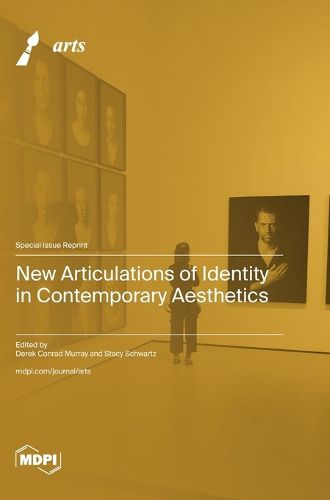Readings Newsletter
Become a Readings Member to make your shopping experience even easier.
Sign in or sign up for free!
You’re not far away from qualifying for FREE standard shipping within Australia
You’ve qualified for FREE standard shipping within Australia
The cart is loading…






This title is printed to order. This book may have been self-published. If so, we cannot guarantee the quality of the content. In the main most books will have gone through the editing process however some may not. We therefore suggest that you be aware of this before ordering this book. If in doubt check either the author or publisher’s details as we are unable to accept any returns unless they are faulty. Please contact us if you have any questions.
In the late twentieth century, political and cultural activism increasingly tackled identity-based forms of structural inequality. During the cultural debates of the 1980s and early '90s, identity politics became a major arena for critical and intellectual inquiry and was increasingly the focus of creative endeavor. In the decades that followed, new discourses considered the construction and maintenance of rigidly defined identities-pondering whether the markers of belongingness (related to gender, sexuality, ethnicity, race, and nationhood) have become too fixed and exclusionary. The increasingly prevalent notion that identity discourses (often concerned with histories of coloniality, genocide, racism, nationalism, and gender and sexuality-based antagonisms) have become siloed, tribal, and engaged in so-called 'purity politics' has led to divisive but generative conversations.
Within this larger conversation, contemporary art and visual culture have emerged as crucial sites for interrogating the ideological construction of identity and difference in representation. This methodologically diverse collection brings together a range of voices that ponder the complexities of belongingness as envisioned in contemporary art and visual culture. This lively interdisciplinary discussion explores how the visual can foster intersectionality as a self-critical praxis while destabilizing fixed notions of identity.
$9.00 standard shipping within Australia
FREE standard shipping within Australia for orders over $100.00
Express & International shipping calculated at checkout
This title is printed to order. This book may have been self-published. If so, we cannot guarantee the quality of the content. In the main most books will have gone through the editing process however some may not. We therefore suggest that you be aware of this before ordering this book. If in doubt check either the author or publisher’s details as we are unable to accept any returns unless they are faulty. Please contact us if you have any questions.
In the late twentieth century, political and cultural activism increasingly tackled identity-based forms of structural inequality. During the cultural debates of the 1980s and early '90s, identity politics became a major arena for critical and intellectual inquiry and was increasingly the focus of creative endeavor. In the decades that followed, new discourses considered the construction and maintenance of rigidly defined identities-pondering whether the markers of belongingness (related to gender, sexuality, ethnicity, race, and nationhood) have become too fixed and exclusionary. The increasingly prevalent notion that identity discourses (often concerned with histories of coloniality, genocide, racism, nationalism, and gender and sexuality-based antagonisms) have become siloed, tribal, and engaged in so-called 'purity politics' has led to divisive but generative conversations.
Within this larger conversation, contemporary art and visual culture have emerged as crucial sites for interrogating the ideological construction of identity and difference in representation. This methodologically diverse collection brings together a range of voices that ponder the complexities of belongingness as envisioned in contemporary art and visual culture. This lively interdisciplinary discussion explores how the visual can foster intersectionality as a self-critical praxis while destabilizing fixed notions of identity.